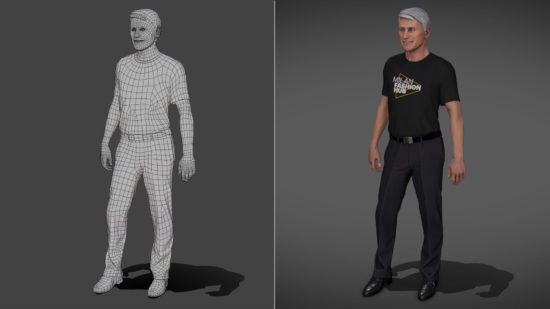Is VFX merely a special effect, or is it a form of intricate animation? Most would unanimously acknowledge that VFX is intricately tied to the gaming world, closely associated with captivating graphics, explosions, and a myriad of other visually striking effects that gamers adore. However, delving into the essence of this term and understanding the mechanics behind designing VFX for games is essential. This knowledge is invaluable when developing games across various platforms, whether mobile, PC, VR, or others.
The good news is that we possess a wealth of information on creating visual effects in games, stemming from our extensive experience in this field. Additionally, we are committed to providing insights into VFX for games, shedding light on the intricacies of this art form, and offering guidance on where to access top-notch visual effects services.
But what exactly is VFX in games? It represents the art and science of crafting captivating visual effects seamlessly integrating into gameplay, elevating it to new heights. VFX in games transcends the boundaries of mere animations; it is the fusion of cutting-edge graphics, complex physics simulations, and intricate programming. These effects serve as the conduit between the player and the virtual world, enriching the gaming experience by adding layers of realism and interactivity.
The significance of visual effects cannot be overstated. Visual effects work synergistically with gameplay to draw players into meticulously crafted worlds, whether it’s the dazzling spectacle of a magical spell or the lifelike rustling of leaves in a virtual forest. They can blur the lines between reality and the digital realm, captivating players’ senses and igniting their imagination.
Visual effects services are integral to game development, with dedicated teams specializing in creating these mesmerizing effects. These experts leverage state-of-the-art technology, including real-time rendering engines and advanced physics simulations, to breathe life into the visual extravaganza of gaming. They fine-tune even the minutest details, from the trajectory of a bullet to the subtle play of sunlight on water, ensuring the seamless integration of visual effects into the game’s narrative.
What is VFX in Games?
Visual effects in games have evolved significantly, reshaping how games captivate players in an era where technological prowess reigns supreme. VFX, in games, distinct from special effects, serves as meticulously crafted animations that breathe life into virtual worlds, offering a profound sense of realism and awe-inspiring immersion. Understanding how VFX is used today is crucial for game developers seeking to push the boundaries of interactive entertainment.
VFX in games entails a process where skilled artists harness graphic tools and specialized software to craft lifelike actions and captivating effects within game environments. These visual effects are the linchpin of modern gaming experiences, elevating the gameplay to unprecedented engagement and visual splendor. The essence of VFX lies in its capacity to bridge the gap between the virtual and the tangible, enhancing the player’s connection with the game’s narrative.
One encounters two distinct categories when exploring VFX in games: gameplay effects and peripheral effects. As the name suggests, gameplay effects take center stage, dazzling players with awe-inspiring explosions, portals to alternate dimensions, and other visually stunning phenomena that demand their attention. Meanwhile, peripheral effects weave a tapestry of subtler elements, such as torrential rain, gusty winds, enveloping dust storms, or ominous smog, immersing players in a richly detailed and believable game world.
Real-time VFX is the Holy Grail for the pinnacle of gaming immersion. In real-time VFX, the magic unfolds before the player’s eyes as events unfold during active gameplay. This instantaneous responsiveness occurs in less than 1/60th of a second, achieving a seamless, remarkable integration. The resulting effect is one of astonishment, evoking a visceral emotional response from the player.
In contemporary game development, the role of VFX is nothing short of transformative. These visual effects are no longer mere embellishments; they are the beating heart of a game’s appeal. From the ferocious explosion of a grenade to the delicate dance of falling cherry blossoms, VFX weaves a visual tapestry that immerses players in a vivid, tangible reality.
So, what is VFX in games today? It is a vibrant fusion of artistry and technology, where artists and developers collaborate to conjure effects that defy the boundaries of imagination. The impact profoundly shapes how players perceive and engage with the gaming experience. To truly grasp how VFX is used today is to appreciate its pivotal role in the evolution of interactive entertainment, where each effect, whether grandiose or subtle, contributes to the symphony of emotions that gaming elicits.
What Kinds of Visual Effects are Used in Games?
VFX in games encompasses a diverse spectrum of techniques, collectively forming the VFX pipeline. Understanding what VFX in games entails is essential for developers seeking to leverage its potential and elevate their gaming experiences. Below, we delve into three key facets of the VFX pipeline, each contributing uniquely to the immersive world of gaming:
Morphing
This enchanting process, nestled within the VFX pipeline, enables the seamless transformation of one object into another, akin to a magician’s trick made possible only in gaming. For example, game characters may employ their magical prowess to morph into fantastical creatures or conjure mystical weapons at will, leaving players mesmerized by the awe-inspiring effects.
Motion capture (MOCAP)
MOCAP, a technological marvel, bridges the divide between reality and the virtual gaming world. It involves recording real-world movements meticulously transcribed into a digital format. Remarkably, MOCAP allows these movements to be embodied by characters of diverse appearances, bringing unparalleled authenticity to virtual performances. An illustrative example is Keanu Reeves’s involvement in Cyberpunk 2077, where his every gesture and action was precisely captured and seamlessly integrated, enhancing the character’s realism and emotional depth.
Computer-generated images (CGI)
CGI, a cornerstone of the VFX pipeline, has undergone a remarkable evolution within the gaming industry. This journey signifies a relentless pursuit of visual excellence. Analogous to motion capture, CGI entails the real-life recording of actors, using their topological data as a foundation for crafting intricate CGI representations. VFX artists then lend their expertise, embellishing these digital avatars with meticulous details to create unique in-game personas. CGI’s integration into game development represents a pivotal leap forward, enriching the visual effects spectrum and unlocking new storytelling possibilities within games.
The evolution of CGI within gaming is a testament to the industry’s unwavering commitment to delivering visually captivating experiences that redefine the boundaries of immersion and engagement. As the gaming industry advances, VFX remains integral, setting the bar for excellence and innovation in interactive entertainment.
VFX for Games on Different Platforms
Designing VFX for mobile games
Visual effects in mobile games undergo a distinctive transformation, primarily due to the constraints imposed by mobile devices. These devices are characterized by smaller screens and relatively limited processing capabilities compared to PCs and consoles, demanding a unique approach to VFX in games. Understanding the intricacies of what VFX in games entails within this mobile context is paramount, given the specific parameters that shape the mobile gaming experience.
The mobile gaming industry presents an interplay of challenges and opportunities for visual effects. Unlike their more robust counterparts, mobile devices require lightweight and less detailed VFX. The primary goal is to strike a harmonious balance between functionality and resource optimization. VFX in mobile games assumes a pivotal role in rendering player interactions, enriching gameplay details, and creating a cohesive visual environment that enhances the overall gaming experience.
In mobile gaming, motion capture, a renowned technique within the VFX arsenal, finds limited utility. The diminutive size of mobile game characters, coupled with their constrained range of movements, renders the integration of motion capture impractical. Moreover, mobile game development often operates within constrained budgets, especially when juxtaposed with the financial resources allocated to PC, VR, or console games.
The importance of optimizing VFX for mobile platforms cannot be overstated. Mobile game developers are tasked with using the power of visual effects while navigating the delicate balance between performance and aesthetics. It requires a keen understanding of VFX in games, particularly in mobile devices, where efficiency and elegance must converge.
Designing VFX for PCs, consoles, and other platforms
High-quality visual effects in games are essential for PCs, consoles, and virtual reality (VR) headsets. The expansive screens and superior performance capabilities of these devices, in contrast to mobile gaming platforms, facilitate intricate gameplay and sophisticated design elements.
It’s particularly important to focus on the visual effects for VR games and console-based games, as the hardware is designed to deliver an exceptionally immersive experience. When crafting games for these advanced platforms, VFX artists employ a wide array of creative techniques aimed at enhancing realism and providing entertainment.
Understanding what VFX is in games reveals its role as a pivotal element in game development, especially for titles designed for PCs, consoles, and VR headsets. These platforms benefit from the potential to display more complex visual effects, thanks to their larger display areas and higher processing power compared to mobile devices. The immersive nature of VR games, in particular, relies heavily on the quality of visual effects to create convincing and engaging environments.
In the context of console games, the visual effects contribute significantly to the overall gaming experience, elevating the level of engagement and enjoyment for the player. VFX artists working on these platforms strive to push the boundaries of creativity, employing innovative VFX techniques to achieve a balance between visual splendor and gameplay dynamics.
How to Make VFX for Games: Top Software
VFX artists are tasked with selecting the most suitable software and tools to craft specific types of visual effects. Given the vast array of technologies available, each with unique functionalities and advantages, these professionals meticulously combine multiple programs to forge the most compelling and visually stunning game effects.
Such a multifaceted approach ensures the delivery of high-quality visual content that enhances the gaming experience. The subsequent enumeration provides an extensive overview of premier software solutions that are instrumental in creating and refining visual effects for games, underscoring their significance in the industry.
The art of generating visual effects in games demands a nuanced understanding of the diverse software landscape, as each program is designed to excel in different facets of VFX. Whether the requirement is for intricate animations, lifelike textures, or dynamic environmental simulations, the choice of software can significantly influence the final outcome.
VFX artists, therefore, employ a synergistic approach, merging the strengths of various tools to produce effects that are not only visually arresting but also seamlessly integrated into the game’s narrative and mechanics. This strategic amalgamation of software enhances the realism and immersion of games, captivating players and drawing them deeper into the game’s world.
The roster of top-tier software outlined below is indispensable for VFX professionals aiming to push the boundaries of visual effects in games. These tools are at the forefront of technology, offering cutting-edge features that enable the creation of previously deemed impossible VFX.
From generating complex particle systems that mimic real-world physics to sculpting environments that transport players to otherworldly realms, the capabilities of these programs are pivotal in shaping the future of game design. With time, the role of these software solutions in crafting the next generation of visual effects for games cannot be overstated, highlighting their critical contribution to the advancement of gaming as a form of digital art.
In the event that you want more control over the intricacies of visual effects, 3Ds Max software is an excellent option. Its set of tools allows you to pay special attention to rendering, detailing, and quality design. In addition, you can animate assets created from scratch and transfer motion capture to digital format, and process scenes using CGI. In short, the program provides all the capabilities for full-fledged VFX development.
Adobe After Effects has dedicated software for developing visual effects, animations, motion graphics, etc. The After Effects features and toolbar are great for designing stunning visuals for games in detail. In addition, the program is ideal for rotoscoping and motion tracking, which is why most VFX artists focus on these tasks when choosing Adobe After Effects.
Unreal Engine and Unity
Unreal Engine and Unity are both platforms for game development, so they provide many tools for creating visual effects for games. You can make basic gameplay and environment effects for games on any gaming platform.
The main advantage of this method is that you can develop a game and VFX for games in Unreal 4 or Unity using the same software and also use an in-editor to test the performance of visual effects. In addition, in such game engines, you can find ready-made assets that can be customized to suit your needs and save time.
The Integral Role of VFX in Video Game Development
VFX has become an indispensable component in the crafting of video games, pushing the boundaries of digital storytelling and player immersion. Through the adept integration of VFX, game developers can conjure worlds that captivate the imagination, forge connections with dynamic characters, and articulate the nuances of complex narratives. The role of VFX in games extends beyond mere aesthetic enhancement; it serves as a critical tool in gameplay mechanics, environmental storytelling, and the creation of emotive atmospheres that resonate with players on a profound level.
In the intricate tapestry of game design, visual effects are the threads that bind the elements of art, sound, and interactivity, creating a cohesive and engaging experience. The evolution of VFX technology has enabled game developers to implement effects that add depth and realism to virtual environments. From the subtle sway of foliage in an enchanted forest to the explosive pyrotechnics of a high-stakes battle, these visual elements contribute significantly to the overall sensory experience within games.
The application of visual effects in games is not limited to large-scale phenomena; it also encompasses subtle details that enhance the authenticity of the game world. The ripple of water, the flicker of shadows cast by a flickering torch, and the intricate patterns of light diffusing through a stained glass window are all examples of VFX that enrich the visual narrative of games. Though often subtle, these elements play a pivotal role in creating an immersive environment that invites players to engage with the game world fully.
The strategic use of VFX in games can dramatically impact gameplay’s pacing and emotional tone. For instance, slow-motion effects during critical moments can heighten tension and focus the player’s attention, while speed boosts and dynamic lighting can convey a sense of urgency or empowerment. The versatility of VFX allows game developers to craft unique atmospheres and experiences, guiding players through a spectrum of emotions and actions.
As the gaming industry continues to evolve, the exploration and implementation of cutting-edge VFX technologies remain at the forefront of game development. These visual effects not only serve to beautify the game environment but also function as essential tools in storytelling, gameplay mechanics, and the creation of immersive experiences. The ongoing advancements in VFX technology promise to expand the possibilities within games further, offering players ever more captivating and immersive worlds to explore.
How to Get Stunning VFX with Minimum Effort
As you can see, designing flawless visual effects for games is no piece of cake. Depending on the level of complexity and realism of the desired VFX, this process may require a team of experts to achieve the goal — starting from animators to composers and 3D artists.
So how do you make VFX for video games with minimum effort, if it’s so hard to achieve? The answer is simple — outsource! 3D-Ace is a professional studio focused on 2D/3D art, animation, and other design-related services. Our expertise is proven by our VFX development portfolio and dozens of completed projects. And most importantly, we are ready to save your time and effort for more important things that require your attention!
So contact us now, so that we can provide you with relevant development information and discuss your expectations!









